The aim of this project is to create a frame that could be used as a space divider in an open area. The main component of the project is 3d-printed structural nodes which would be connected to each other with rods and would be covered from both sides in an elastic fabric. The resulting frame is benefiting the visual properties of the sapace.
Together with the 3d printed nodes, fibreglass rods and white fabric will be used as materials for the construction.
References and structural studies:
The concept was to have the 3d printed nodes as the synapses in our body and to structurally use rods and elastic fabric to connect the synapses to each other.
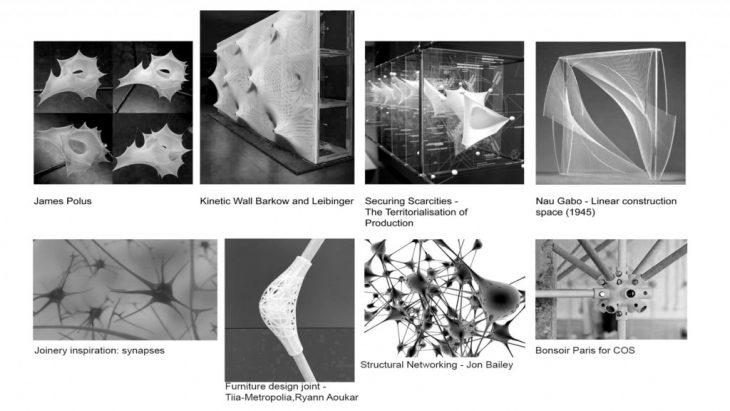
First trial for the 3d node:
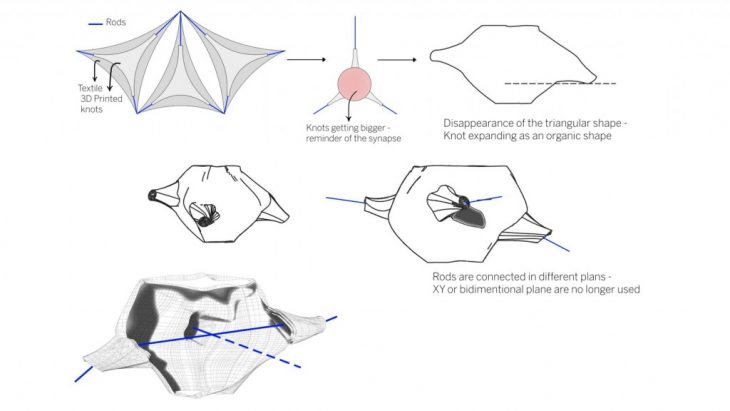
Each node was generated in a unique way with different angles for the legs, different angles of rotation and distortion. This way, when the rods are connected to the nodes, the frame will be covered with the materials in the 3 dimensional space.
8 differe
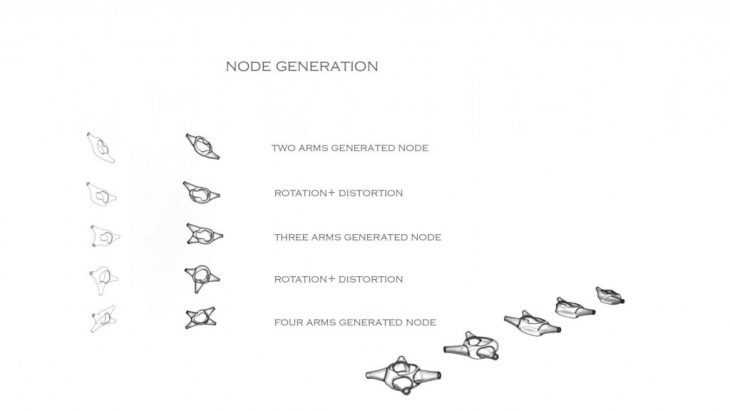
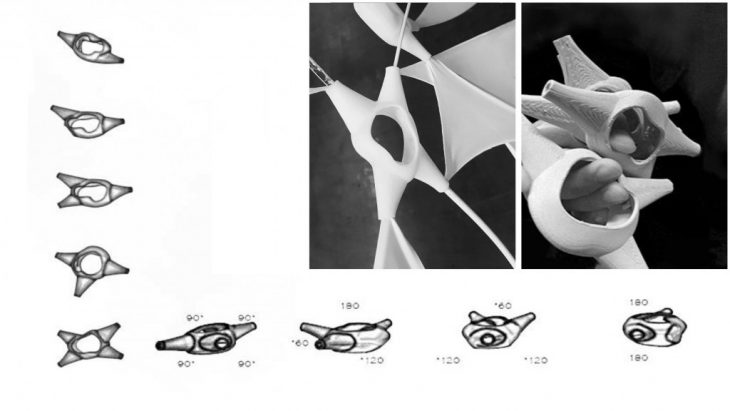
Assembly process:
While assembling the frame, small pieces of fabric was used in between the legs of the nodes and rods. This way the pressure of the nod and fabric was studied. One by one, small pieces of fabrics would be taken out and the main triangular fabric would be put in between the rods and 3d printed nodes.
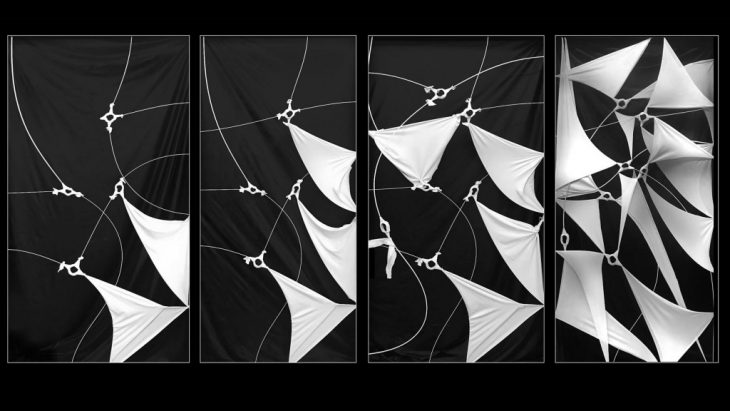
Final result:
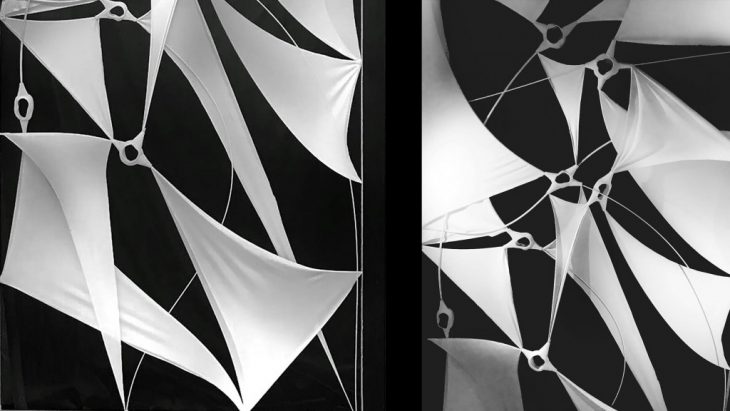
Syn_veilar is a project of IAAC, Institute of Advanced Architecture of Catalonia, developed as part of the Digital Fabrication course at the Master in Advanced Architecture program in 2017/18 by Yasmina El Helou, Adriana Lima Kano, Marc Bou Assaf, Ozge Tektas.
Tutors: Alexandre Dubor, Raimund Krenmueller
